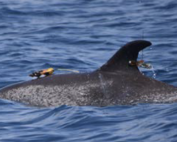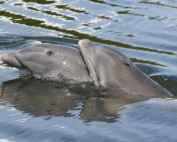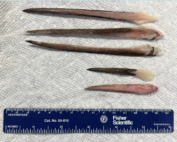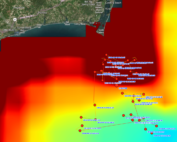Dolphin Behavior
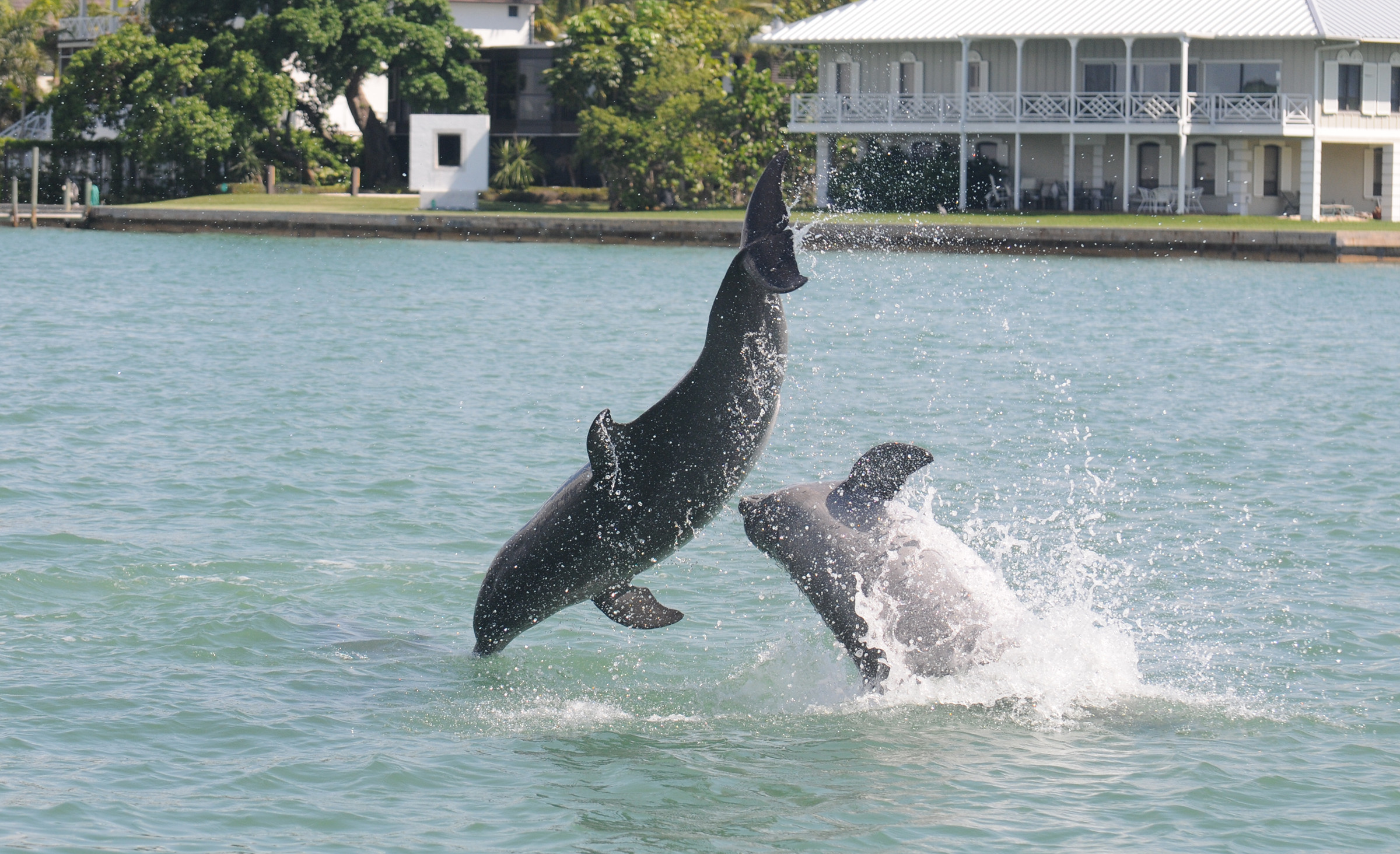
SDRP conducts the world’s longest-running study of a wild dolphin population, initiated in 1970. Information available from five decades of research on the multi-decadal, multi-generational, year-round resident community of individually identifiable bottlenose dolphins of Sarasota Bay established this as a unique natural laboratory for learning about the biology, behavior, ecology, social structure, health, and communication of dolphins, as well as the effects of human activities on them.
Long-term study is crucial for understanding the lives of members of long-lived species such as bottlenose dolphins, and for being able to detect trends in populations relative to changes in their environment. Knowing the long-term geographic range of a population unit allows the measurement of exposure to threats, which in turn facilitates mitigation, including direct interventions.
The ability to observe identifiable individual dolphins of known sex, age, and familial relationships through all of their life history milestones and associated transitions in behavioral and social patterns, to collect data on health and condition, and to then document their reproductive success and cause of death is rare in cetacean research.
Understanding animal behavior is about more than just making a note of every exciting or interesting thing that happens. Instead, it’s a systematic documentation of all of their behavior and activities. During Focal Dolphin Behavioral Follows (Focal Follows), we follow dolphins for a predetermined period of time, recording what an animal is doing at set intervals (typically every three minutes). That allows us to put behavior into perspective relative to other activities over time.
Such non-invasive behavioral studies were developed by Dr. Jeanne Altmann, a behavioral ecologist famous for her groundbreaking studies on the social behavior of baboons.
The depth of background knowledge about each member of the locally resident “cast of characters” guides research and facilitates interpretation of data on the behavior of individuals.
Studies have examined such topics as ranging patterns, habitat use, feeding behavior, and are especially focused on adverse human interactions, such as provisioning, responses to boat approaches and construction activities, and interactions with anglers.
We typically conduct these surveys using a vessel with a tower, which allows us to better see through the water’s surface, and we are integrating drones into our research to gain an even better view of the animals.
Since we began using these techniques in the 1980s, we have records of more than 2,000 Focal Follows and the information we’ve gained has allowed us to answer important questions — for instance, how much time dolphins spend feeding or socializing compared to other activities. Having this baseline information allows us to detect unusual behaviors or problems.
Research is conducted under a series of Scientific Research Permits issued by NOAA’s National Marine Fisheries Service, and annual renewals of Institutional Animal Care and Use Committee approvals by Mote Marine Laboratory.
Understanding Offshore Dolphin Behavior
High-resolution data-loggers reveal fine-scale movement and foraging behavior of offshore dolphins “Bill,” an Atlantic spotted dolphin, with a satellite-linked tag on his dorsal fin and DTAG on his back upon release in September
Dolphin Personalities and Conservation
Evidence of consistent individual differences (IDs) in behavior, indicative of individual personalities (also referred as behavioral types or coping strategies), has been demonstrated across the animal kingdom from mollusks to mammals. "Who" an individual
Understanding Animal Residency
What is animal residency and how do we define and measure it? In marine mammal research, residency is often used to describe the place that animals (or groups of animals) occupy in a given
Barbed! Stingray Spine Injuries
Did you know that stingrays are dolphin neighbors? They share share shallow seagrass habitat in Sarasota Bay where they forage for food. Dolphins are even occasionally "barbed" by the stingray's venomous spine. These spines
Dolphins & Hurricane Season
Dolphins & Hurricanes One question we’re frequently asked is what dolphins do during hurricanes. The short answer is that we just don’t know. Since it’s not safe for humans on




